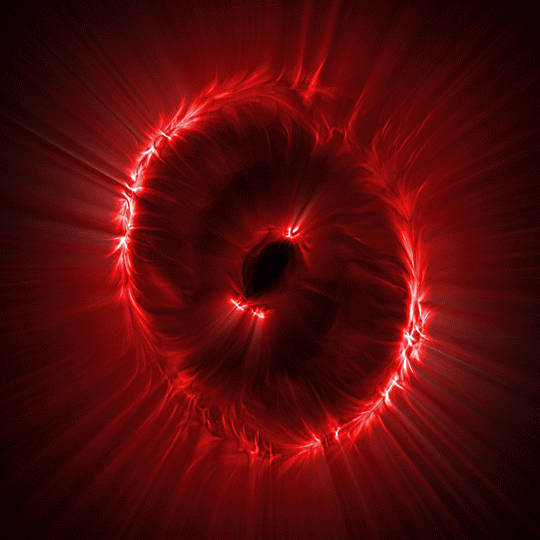Mydickneedscpr - New Blog New Lifestyle

More Posts from Mydickneedscpr and Others

Stay safe while marching today, everyone! 🕯️📢💪🏿 #MarchForOurLives #Right2Protest


(Image caption: A bundle of neurons: A bioengineering team at Brown University can grow “mini-brains” of neurons and supporting cells that form networks and are electrically active. Credit: Hoffman-Kim lab/Brown University)
An accessible approach to making a mini-brain
If you need a working miniature brain — say for drug testing, to test neural tissue transplants, or to experiment with how stem cells work — a new paper describes how to build one with what the Brown University authors say is relative ease and low expense. The little balls of brain aren’t performing any cogitation, but they produce electrical signals and form their own neural connections — synapses — making them readily producible testbeds for neuroscience research, the authors said.
“We think of this as a way to have a better in vitro [lab] model that can maybe reduce animal use,” said graduate student Molly Boutin, co-lead author of the new paper in the journal Tissue Engineering: Part C. “A lot of the work that’s done right now is in two-dimensional culture, but this is an alternative that is much more relevant to the in vivo [living] scenario.”
Just a small sample of living tissue from a single rodent can make thousands of mini-brains, the researchers said. The recipe involves isolating and concentrating the desired cells with some centrifuge steps and using that refined sample to seed the cell culture in medium in an agarose spherical mold.
The mini-brains, about a third of a millimeter in diameter, are not the first or the most sophisticated working cell cultures of a central nervous system, the researchers acknowledged, but they require fewer steps to make and they use more readily available materials.
“The materials are easy to get and the mini-brains are simple to make,” said co-lead author Yu-Ting Dingle, who earned her Ph.D. at Brown in May 2015. She compared them to retail 3-D printers which have proliferated in recent years, bringing that once-rare technology to more of a mass market. “We could allow all kinds of labs to do this research.”
The spheres of brain tissue begin to form within a day after the cultures are seeded and have formed complex 3-D neural networks within two to three weeks, the paper shows.
25-cent mini-brains
There are fixed costs, of course, but an approximate cost for each new mini-brain is on the order of $0.25, said study senior author Diane Hoffman-Kim, associate professor of molecular pharmacology, physiology and biotechnology and associate professor of engineering at Brown.
“We knew it was a relatively high-throughput system, but even we were surprised at the low cost per mini-brain when we computed it,” Hoffman-Kim said.
Hoffman-Kim’s lab collaborated with fellow biologists and bioengineers at Brown — faculty colleagues Julie Kauer, Jeffrey Morgan, and Eric Darling are all co-authors — to build the mini-brains. She wanted to develop a testbed for her lab’s basic biomedical research. She was interested, for example, in developing a model to test aspects of neural cell transplantation, as has been proposed to treat Parkinson’s disease. Boutin was interested in building working 3-D cell cultures to study how adult neural stem cells develop.
Morgan’s Providence startup company, MicroTissues Inc., makes the 3-D tissue engineering molds used in the study.
The method they developed yields mini-brains with several important properties:
Diverse cell types: The cultures contain both inhibitory and excitatory neurons and several varieties of essential neural support cells called glia.
Electrically active: the neurons fire and spike and form synaptic connections, producing complex networks.
3-D: Cells connect and communicate within a realistic geometry, rather than merely across a flat plane as in a 2-D culture.
Natural density: Experiments showed that the mini-brains have a density of a few hundred thousand cells per cubic millimeter, which is similar to a natural rodent brain.
Physical structure: Cells in the mini-brain produce their own extracellular matrix, producing a tissue with the same mechanical properties (squishiness) as natural tissue. The cultures also don’t rely on foreign materials such as scaffolds of collagen.
Longevity: In testing, cultured tissues live for at least a month.
Hoffman-Kim, who is affiliated with the Brown Institute for Brain Science and the Center for Biomedical Engineering, said she hopes the mini-brains might proliferate to many different labs, including those of researchers who have questions about neural tissue but not necessarily the degree of neuroscience and cell culture equipment required of other methods.
“If you are that person in that lab, we think you shouldn’t have to equip yourself with a microelectronics facility, and you shouldn’t have to do embryonic dissections in order to generate an in vitro model of the brain,” Hoffman-Kim said.






Health Symptoms From All Wireless Devices Including Military Weaponization of the Atmosphere (Geoengineering) - http://www.stopthecrime.net/smartmeters/flyers/symptoms.pdf



“Happiness is not about always getting what we want, it is about embracing who we really are. Accepting this profound truth is self-realization.” -Anon I mus (Spiritually Anonymous)
Alzheimer’s May Not Originate in the Brain

Authored by Kenny Walter, Digital Reporter, R&D Magazine
The long assumption that Alzheimer’s disease originates in the brain may not be true after all— as new findings indicate the disease could be triggered by breakdowns elsewhere in the body.
Researchers from the University of British Columbia (UBC) believe that the new discovery could lead to new drug therapies that may be able to stop or slow the disease down without acting directly on the brain, an often complex, sensitive and hard-to-reach target.
Read more: https://www.rdmag.com/article/2017/11/alzheimers-may-not-originate-brain

-
 thegoodbull reblogged this · 3 months ago
thegoodbull reblogged this · 3 months ago -
 thegoodbull liked this · 3 months ago
thegoodbull liked this · 3 months ago -
 kimbaplover reblogged this · 3 months ago
kimbaplover reblogged this · 3 months ago -
 thatspacerocketreader liked this · 4 months ago
thatspacerocketreader liked this · 4 months ago -
 ms-tresser reblogged this · 6 months ago
ms-tresser reblogged this · 6 months ago -
 thahottes liked this · 7 months ago
thahottes liked this · 7 months ago -
 clarinham97 liked this · 7 months ago
clarinham97 liked this · 7 months ago -
 annaxpdoa liked this · 7 months ago
annaxpdoa liked this · 7 months ago -
 blueeyedvirgo89 reblogged this · 8 months ago
blueeyedvirgo89 reblogged this · 8 months ago -
 kimbaplover liked this · 8 months ago
kimbaplover liked this · 8 months ago -
 needleandstory reblogged this · 8 months ago
needleandstory reblogged this · 8 months ago -
 lysh68 reblogged this · 9 months ago
lysh68 reblogged this · 9 months ago -
 tattoosbysam liked this · 9 months ago
tattoosbysam liked this · 9 months ago -
 corpseprxnce liked this · 9 months ago
corpseprxnce liked this · 9 months ago -
 theicecreamremedy reblogged this · 9 months ago
theicecreamremedy reblogged this · 9 months ago -
 alteregodepega liked this · 9 months ago
alteregodepega liked this · 9 months ago -
 ambitiousfrequency liked this · 10 months ago
ambitiousfrequency liked this · 10 months ago -
 dream-in-hearts liked this · 1 year ago
dream-in-hearts liked this · 1 year ago -
 earth2tethys liked this · 1 year ago
earth2tethys liked this · 1 year ago -
 daydream-amidflowers liked this · 1 year ago
daydream-amidflowers liked this · 1 year ago -
 theyforcedmetogetablog reblogged this · 1 year ago
theyforcedmetogetablog reblogged this · 1 year ago -
 blackboyjoy70 liked this · 1 year ago
blackboyjoy70 liked this · 1 year ago -
 lovergirl4463 liked this · 1 year ago
lovergirl4463 liked this · 1 year ago -
 stubbornbliss liked this · 1 year ago
stubbornbliss liked this · 1 year ago -
 consistent-sincerity reblogged this · 1 year ago
consistent-sincerity reblogged this · 1 year ago -
 exzkjrtnqf liked this · 1 year ago
exzkjrtnqf liked this · 1 year ago -
 pinkgirlinablueworld reblogged this · 1 year ago
pinkgirlinablueworld reblogged this · 1 year ago -
 pinkgirlinablueworld reblogged this · 1 year ago
pinkgirlinablueworld reblogged this · 1 year ago -
 doubledogdesi reblogged this · 1 year ago
doubledogdesi reblogged this · 1 year ago -
 timetoexplorethis liked this · 1 year ago
timetoexplorethis liked this · 1 year ago -
 little-star02 liked this · 1 year ago
little-star02 liked this · 1 year ago -
 cassaus liked this · 1 year ago
cassaus liked this · 1 year ago -
 justsomeguy283 liked this · 1 year ago
justsomeguy283 liked this · 1 year ago -
 fishin1234 liked this · 1 year ago
fishin1234 liked this · 1 year ago -
 wungamunga2 reblogged this · 1 year ago
wungamunga2 reblogged this · 1 year ago -
 sorrowismysolace reblogged this · 1 year ago
sorrowismysolace reblogged this · 1 year ago -
 mastering-peace reblogged this · 1 year ago
mastering-peace reblogged this · 1 year ago -
 littlestellababy27 liked this · 1 year ago
littlestellababy27 liked this · 1 year ago -
 onelittlekingdom reblogged this · 1 year ago
onelittlekingdom reblogged this · 1 year ago -
 masawi liked this · 1 year ago
masawi liked this · 1 year ago -
 justanxiousandhi liked this · 1 year ago
justanxiousandhi liked this · 1 year ago -
 all-manic-no-disco liked this · 1 year ago
all-manic-no-disco liked this · 1 year ago